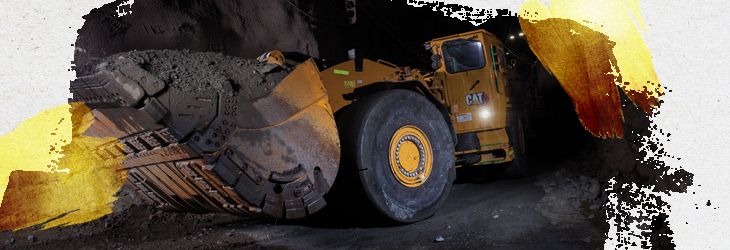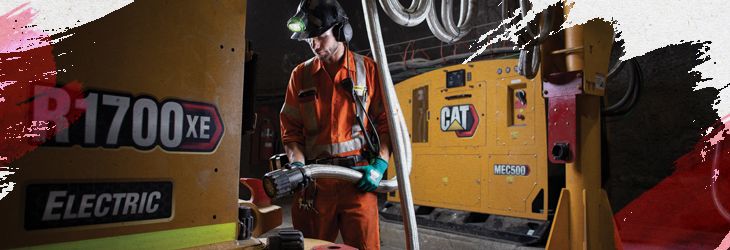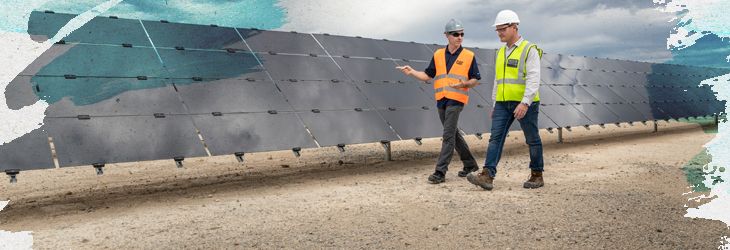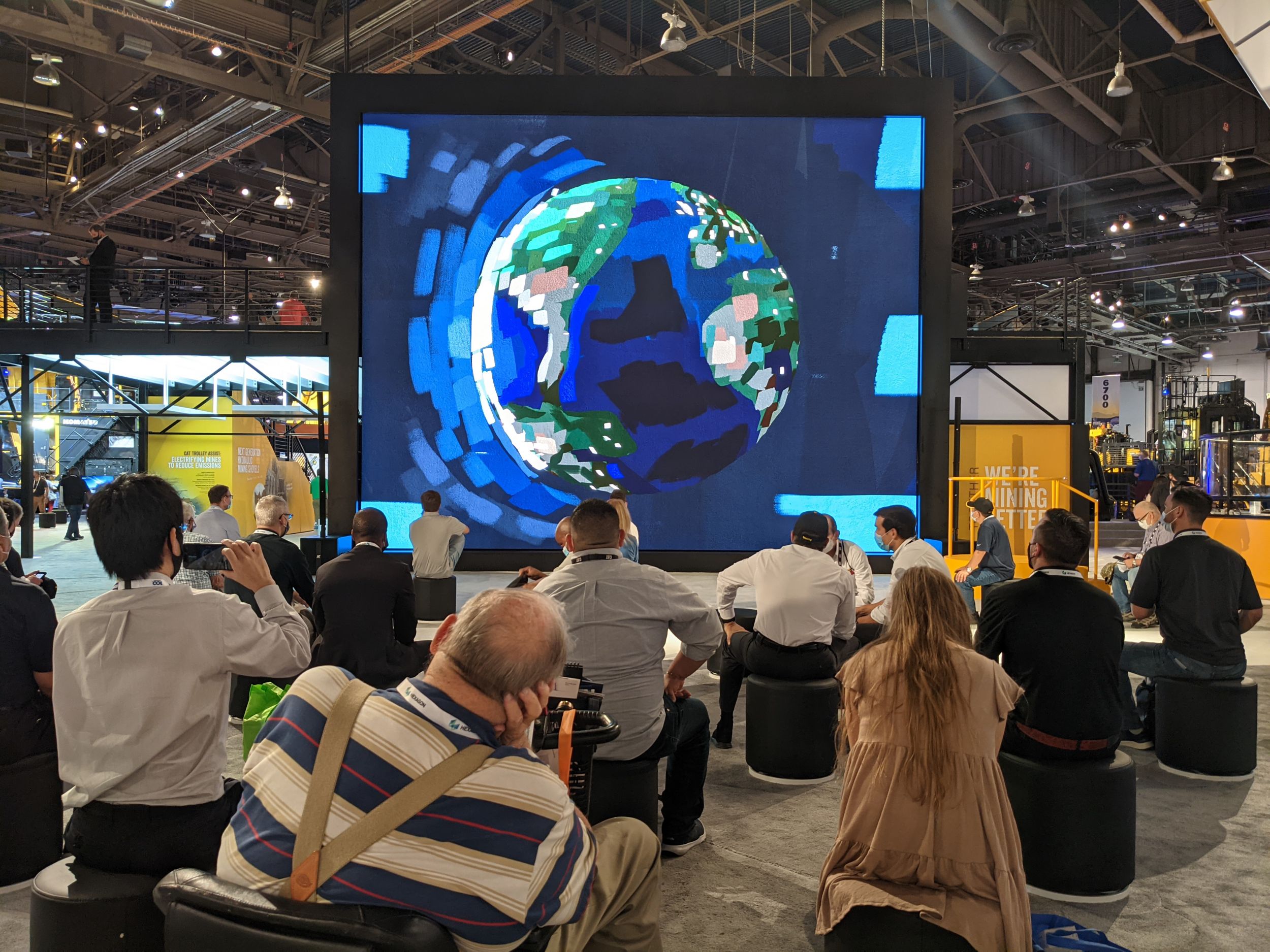“We have a great team of people backed by investment in research and development that have a laser focus on discovering new ways to help our customers mine better,” says Johnson. “While we are focused on the future, we’re also committed to working with our customers to help them use our current solutions to reduce that impact today.”
When explaining the wide variety of offerings Caterpillar provides to help customers in the areas of sustainable mining, the company boils the solutions down to two key areas: optimizing the mining operation and minimizing the impact machines have on the environment.
“Really, there are two ways we can help our customers meet their ESG goals,” says Johnson. “First, we can provide solutions that help them optimize the way they work. The more efficiently and productively they operate, the less fuel they burn, the less energy they use and the less waste they generate.”
Secondly, the company focuses on making machines and power solutions more sustainable. “We’re continually innovating to develop new products that operate with reduced — or zero — exhaust emissions, and by developing power solutions that address climate-related challenges,” says Johnson. In its 2020 Annual Sustainability Report, Caterpillar made a commitment that 100% of its new products through 2030 will be more sustainable than the previous generation through collaborating with customers, reduced waste, improved design for rebuild/remanufacturing, lower emissions or improved efficiency.
Johnson points out that beyond the individual solutions the company provides, the company’s mining experience and integration expertise are key differentiators.
“We offer a breadth of machines, technologies, power and energy solutions, services and processes that can help our customers build a better world,” she says. “And we have talented people who work alongside them to bring it all together.”
“We take a full-site approach — whether we’re implementing our proven autonomous mining systems, helping mines transition to new energy solutions, providing machines that run on alternative fuels or that are powered by electricity, or delivering asset health and support services that maximize the life and performance of every machine on site.”
OPTIMIZING OPERATIONS
One of the best ways Caterpillar can contribute to its customers’ sustainability goals is by helping them continually improve the way they operate, says Johnson.
“A fully optimized mining operation will deliver the highest safety and productivity, lowest cost and least possible environmental footprint,” she says. “And there are many Cat offerings today that our customers can use to mine more efficiently.”
Maximized machine efficiency
Maximizing the efficiency of traditional power systems reduces fuel usage and leads to fewer emissions. Caterpillar has made advancements in overall fuel economy for diesel-powered machines, such as reducing machine weight to optimize payload, increasing speed to reduce cycle times, and offering power settings that include economy mode options.
“We also continue to introduce new diesel-electric machines that operate more efficiently in some applications, so they burn less fuel,” says Johnson. “And our diesel-electric engines serve as a building block for a future transition to battery-electric power.”
Autonomy and technology
Technology offerings, including autonomous mining systems, deliver significant benefits across the mining operation, from boosting safety and productivity to enabling more consistent and efficient operations. The result is also a decrease in fuel burn for a reduction in emissions.
Cat MineStar™ Solutions technology and autonomy offerings:
- Deliver consistent and more efficient operations to reduce fuel usage
- Enable higher machine utilization, for reductions in idle time and less wasted fuel
- Utilize dispatch algorithms to reduce idle time and bunching at the loading site for a decrease in fuel burn
- Incorporate machine health technologies and data analytics to maximize asset health and performance
Equipment lifecycle management
“Our mining customers are always looking for ways to maximize the value they get from their Cat machines,” says Johnson. “And while that’s always good for their bottom line, the more a mine cares for its equipment, the more efficiently it operates — which can reduce the overall fuel burn. And the longer machines last, the less waste is contributed to the environment.”
Caterpillar and Cat dealers have dozens of products, technologies, services and solutions that help mining operations get more from their equipment throughout its full lifecycle. In addition to hands-on maintenance and repair services and Customer Value Agreements provided by Cat dealers, Caterpillar also provides digital solutions, ecommerce offerings and applications for equipment monitoring that contribute to reduced fuel consumption.
“Managing the health of every asset ensures top performance that can lead to lower emissions,” says Johnson. “It also helps extend the life of consumables to decrease the amount of waste contributed to the environment.”
Rebuilding, remanufacturing and recycling
For more than 45 years, Caterpillar and Cat dealers have been rebuilding and remanufacturing parts, components and complete machines to increase the lifespan of equipment and reduce owning and operating costs. That approach is good for business and can be good for the environment.
“These solutions can have a significant impact — reusing instead of discarding, conserving energy, reducing waste, keeping nonrenewable resources in circulation for multiple lifetimes and minimizing the need for new raw materials,” Johnson says. “We’re also listening to our customers and investigating ways we can help them in their efforts to recycle end-of-life machines and components.”
Retrofits and upgrades
Retrofits and upgrades enhance and improve older machines to incorporate efficiency improvements and emission reduction solutions, and to keep them in production longer to conserve energy and minimize the need for raw materials.
“Similar to the benefits of rebuilding and remanufacturing, giving customers the opportunity to improve older machines is good for business and it can support our customers’ sustainability goals,” says Johnson.
MINIMIZING IMPACT
Just as there is no single solution that will enable every mine to meet its environment-related goals, there is no single solution when it comes to reducing — and eventually eliminating — machine emissions. Caterpillar is focused on helping customers achieve their climate-related objectives through a breadth of machinery and power solutions that contribute to lowering emissions.
Electrification
“Making it possible for mining equipment to be powered by electricity has been a focus at Caterpillar for many years,” says Johnson “We continue to leverage our expertise and are committed to building a broader range of electrified products that build on the legacy of our current offerings.”
Fully electric Cat machines rely on a single non-engine power source and produce zero exhaust emissions. Some electric machines are tethered to a power source. For example, a trolley assist attachment for Cat trucks allows the machine to make use of external power during a certain section of the haul road. When connected to the trolley system, the truck’s propulsion system is powered purely with electricity from the power grid, which delivers a 100% speed-on-grade improvement and can reduce exhaust emissions up to 60%.
Battery-powered vehicles are also fully electric but are not tethered to a power source. Instead they rely on a mobile fast charging system, the Cat MEC500.










